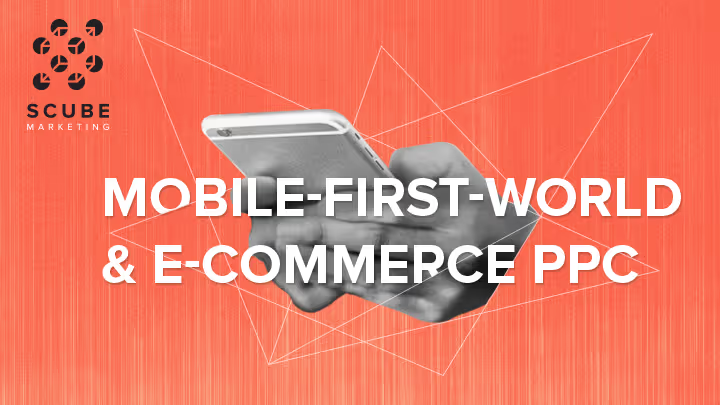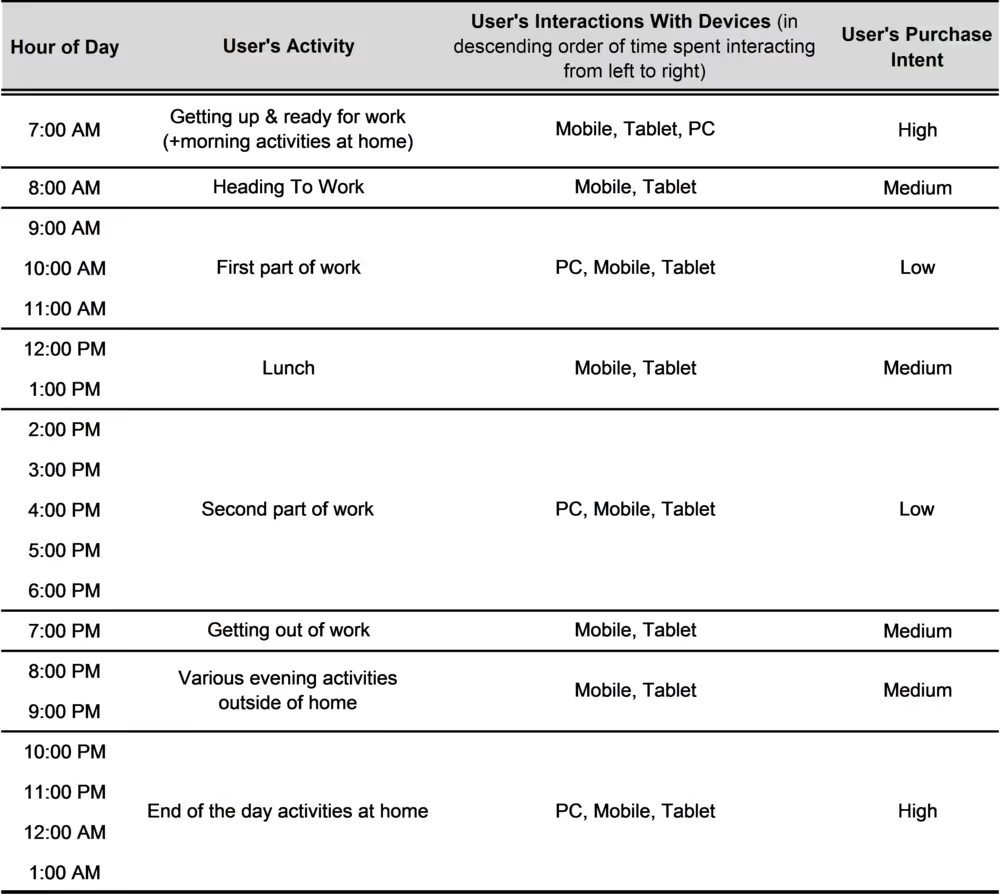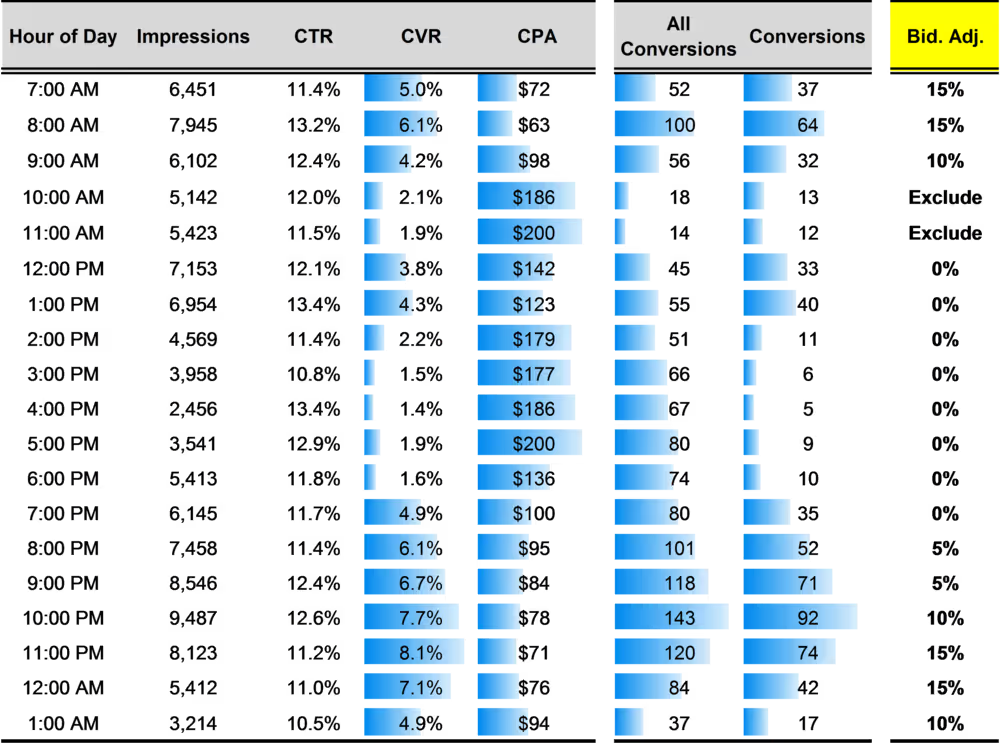
If you operate an e-commerce business and have even a little experience with Google Adwords and PPC marketing, you are probably familiar with the term mobile-first-world – the change in our offline/online behavior where "relying on our phones has become second nature". To no surprise, this shift has influenced digital marketers to focus their efforts more on capturing the attention of mobile device users.
However, even though currently the main fuss is about the increasing dominance of smartphones (and rightfully so), I feel that several equally important observations are overshadowed, or at least not given the attention they deserve.
Feeling this way, I would like to examine and share my thoughts not just on mobile device dominance, but more on the changing online behavior of users because of this growing dominance. More specifically, on the increasing mobility, depth and complexity of online purchasing.
To get into this, let's delve deeper and look at some facts that help us understand what's behind the term mobile-first-world. For starters, cumulative searches on mobile devices have surpassed searches on desktops. Smartphones are also the first devices that people turn to in moments of need. These facts shine a light on two clear and extremely important things:
However, if you want to adapt and maintain a successful PPC program in e-commerce for the foreseeable future, it is not enough to just understand what mobile-first-world means. You must understand the crucial shift in user behavior–the increase in the number of touch-points, during which people engage with your business before making a purchase.
Moreover, this rise in mobility also means that there are more engagement circumstances to think about, because until completing a purchase, people will engage with your business from different: days, times of day, physical locations, engagement intents (purposes), browsers, apps and so on. Finally, it's not that smartphones will quickly make other devices obsolete and become the single and only way of finding information online–for now, assessing how much your e-commerce is susceptible to mobile devices and the first two points is still very important.
Therefore, instead of talking and centering ourselves around mobile devices only, I would like to focus more on mobility–user mobility and the quick pace with which they interact with information in today's cross-device, cross-app, cross-browser, cross-X world.
Having all of this in mind, let's look at how online purchasing behavior has changed in the two periods–before the mobile-first-world and after it.
I think you would agree that in the past years a typical approach to making a purchase online would seem like a specific task, where you dedicate a certain amount of time, usually via a PC, probably in the evening after work, doing some sort of research, choosing the actual product from the selection available and making said purchase. I call this the pre-defined purchase.
Today, however, this process is breaking into parts and shifting towards a more flexible, on-the-go and mobile-friendly one. Therefore, now and in the foreseeable future a typical purchase will likely be along these lines–doing the initial product research on a smartphone in the evening while waiting for a friend in a car, browsing again through the selection and offers at the end of the day at home via a PC, going to bed and getting up thinking which product and offer best suits you, taking the subway to work while rechecking and finalizing your decision throughout the day on various devices, then finally making this purchase on a PC in the evening. I call this the mobile purchase.
Now let's see what these changes look like in a real-world example. With this example I want to accomplish two main goals:
Given that in recent years home furnishing along with clothes, cosmetics and electronics have been one of the most popular items sold online, let's say we own a simple furniture store that has a significant and increasing share of revenue from e-commerce. For the sake of simplicity, let's assume that our target CPA is $100.
Let's create ourselves a visual representation of our business's typical client–what are his or her most probable activities, device preferences and purchase intents during different hours of a typical workday. A good illustration of this would be the following table:

Example of a typical buyer's workday activities, device preferences and purchase intents by different times of the day
This type of person, which we assume represents our typical buyer online, is likely to act like this:
The key element here is not the end point (the stand-alone time or device–the PC in the evening) at which the purchase was made, but rather the whole conversion path and the cross-X activity in it.
Let's now consider the touch-points users can take in their engagement journey with our business that have valuable information for us. Remember that we can decide/define what type of conversions we count in our main 'Conversions' column as the remaining ones will be counted in the 'All Conversions' column.
For the sake of simplicity let's say we know three distinct actions a person could take on our website:
Here we need to identify and clearly understand important user activity that spreads across different devices. Consider these primary metrics:
Now we are ready to apply a smart bid management strategy. We look at the actual results–the traffic, penetration, micro and cross-device conversions. We run the reports in AdWords and generate ourselves a comfortable view of the main metrics:

Example of AdWords engagement and conversion results during different hours of day
Combining our typical buyer's portrait with the actual results at hand, we can extract useful information from this and apply smart bid adjustments:
10:00 AM - 12:00 PM
While having high traffic and CTR levels, we receive very low 'Conversions' and 'All Conversions' amounts here. Therefore, we conclude that people here are mainly from our browsing segment–we exclude them.
12:00 PM - 7:00 PM
While also having good traffic and CTR levels here, we receive low 'Conversions', but high 'All Conversions' numbers here. Therefore, we conclude that people here are mainly from our medium importance group–we keep them with around baseline bids (despite high CPAs) as we want to stay competitive here and be somewhere in the middle of search results.
07:00 AM - 10:00 AM and 7:00 PM - 1:00 AM
Seeing highest numbers in 'Conversions' and 'All Conversions' columns and smallest numbers in CPAs–we increase bids, because we want to be in the highest positions at the times when people show their purchase intents the most.
Now let's look at the results across different devices:

Example of AdWords engagement and conversion results by different devices
Let's go over the results and the applied bid adjustments for every device separately:
Having this strategy in place, we can feel safe that we have covered the primary manageable bid management aspects in AdWords, which can be scaled and applied to different accounts (businesses), campaigns and ad groups.
To wrap up, I would like to emphasize that uncovering and having a clear picture of how your user-business online engagement looks in today's mobility and cross-X based world, will provide you with a strong foundation for maintaining highly performing PPC programs.